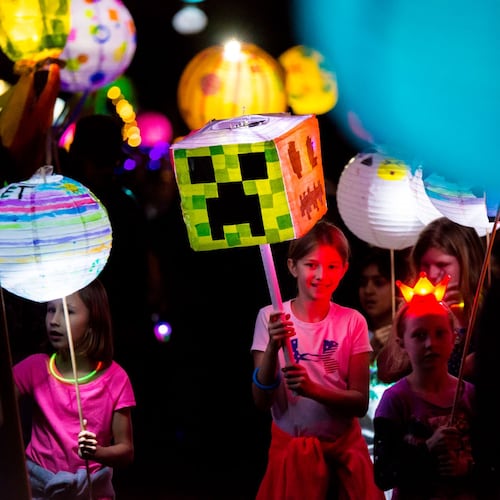Whitney has earned attention for evocative line drawings whose innocent storybook style both belies and accentuates the painful personal history behind them. Though Stansell does not limit herself to autobiography, her grandfather’s stint in prison and its impact on the family clearly has a hold on her imagination.
Micah, who just received a Working Artist Project grant from the Museum of Contemporary Art of Georgia, makes videos and video installations that combine elusive plots, artful imagery and experiments in perception and cognition.
Husband and wife, they are also an artistic duo. They work together on the videos. More important, they share concerns – narrative, time and memory, among them – and content: Micah has often drawn inspiration from her family history.
You can see the dynamic at work in their first joint exhibition, now at Whitespace. The show is built around a family story, which the artists addressed in their respective media, each reacting to the other as they went.
The gist: A girl is standing on the porch of her home when a car drives up. A couple and their son get out. He goes to play with her sister, while the couple wordlessly hands a wad of cash to the woman at the door and retreats. Meanwhile, the youngsters get into a fight, which the older girl breaks up.
Whitney plots the story in a series of seven drawings, which are more cinematic than her previous work. In fact, they read like a storyboard for a film, replicating a variety of camera shots. Some, like the close-up of hands exchanging money, are duplicated in the video.
She’s also added new depth and texture by layering cut-outs of figures and scenery atop one another. The pieces are reminiscent of pop-up books and paper dolls, the stuff of an ordinary childhood, which makes the pieces more poignant.
Micah’s emotionally taut video installation comprises four monitors on two adjacent walls. Like his previous installation, “Presynaptic Potential,” this one is set up so that you can’t see all the images at once. Furthermore, each of videos is a slightly different version of the story, so that looking at one won’t give you the whole.
He further complicates this “Rashomon” effect by slowing and speeding up time and in some cases, syncing loops so that the action seems to move from one monitor to the other.
It’s not necessary to know that the story is based on Whitney’s mother’s experience of depending on the charity of relatives. The story conveys the tension and shame of such a moment without explanation.
“Garment and Structure,” Whitney’s installation, is the perfect finale. An enlarged paper version of the jumper worn by the girl in the story hovers like a balloon above small models of three buildings, one of which is the house depicted in both artists’ work. The dress is tethered to them by a thread.
All in ghostly white, the piece sums up the title and larger meaning of their work. Our memories and the meaning we assign to them may change through time, but as Faulkner famously said, the past is never past.
Catherine Fox is chief art critic at ArtsCriticATL.com.
Visual arts review
“Past. Perfect. Continuous.”
Through May 15. 11 a.m.-5 p.m. Wednesdays-Saturdays. Whitespace. 814 Edgewood Ave. 404-688-1892. www.whitespace814.com
The bottom line: Whitney Stansell and Micah Stansell rank among Atlanta’s promising young artists. See why at their first joint exhibition.
About the Author
Keep Reading
The Latest
Featured
